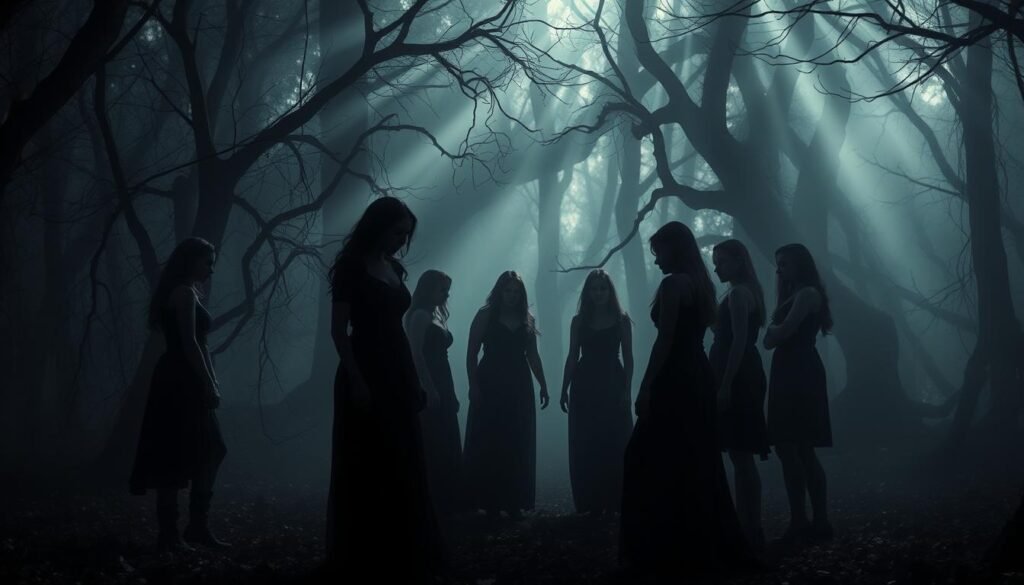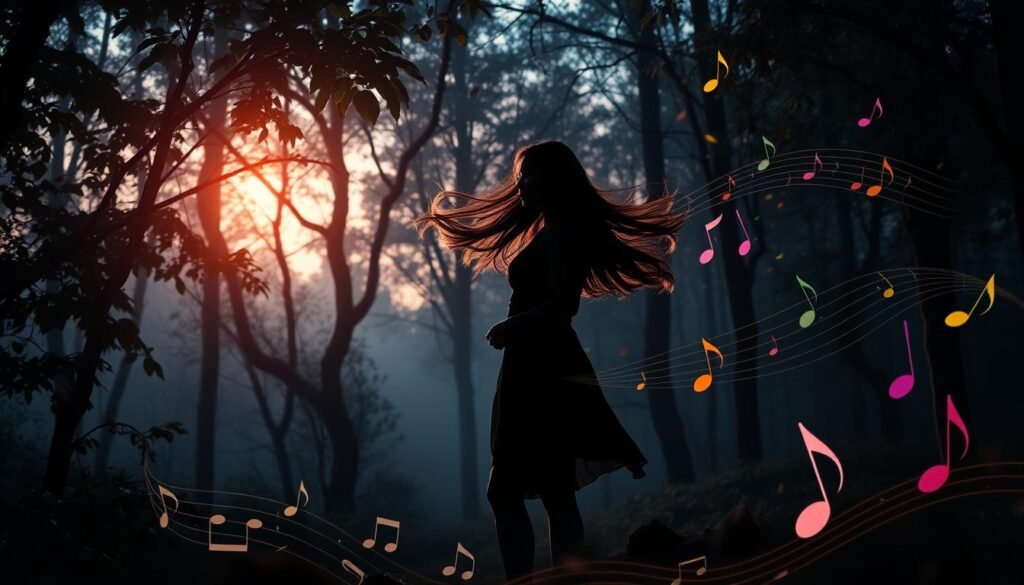Taylor Swift’s “Mad Woman” Lyrics: Meaning & Analysis

Taylor Swift’s “mad woman” explores female rage and its perception in society. The song connects the “mad woman” trope to modern issues, commenting on patriarchy and women’s demonization.
It tackles misogyny, mental health, and female empowerment. The lyrics resonate with those labeled “crazy” for normal emotional responses.
Key Takeaways
- The song “mad woman” explores the societal perception and treatment of women’s anger and emotions.
- Taylor Swift uses vivid metaphors and imagery to portray the experience of being dismissed or attacked for expressing justified feelings.
- The lyrics draw parallels between the historic “hysteria” myth and the modern-day gaslighting of women who stand up to mistreatment.
- The song reflects Taylor’s personal battles, particularly her feud with Scooter Braun, and the broader issue of women being demonized for asserting their power.
- The track emphasizes themes of female empowerment, strategic planning, and the refusal to back down in the face of injustice.
Unleashing Female Rage in “mad woman”
Taylor Swift’s “mad woman” boldly expresses female rage. It challenges society’s view of women who stand up for themselves. The song starts mid-argument, with Swift asking, “What did you think I’d say to that?”
Swift compares her angry response to a scorpion’s sting. She says, “Does a scorpion sting when fighting back? They strike to kill and you know I will.” This shows her fierce reaction when provoked.
Taylor Swift’s Comparison to a Scorpion’s Sting
The scorpion metaphor represents Swift’s primal, vengeful rage. It suggests she will strike back fiercely when attacked. This vivid image captures the intensity of her anger.
Haunting Imagery: Face in the Neighbor’s Lawn
Swift uses haunting imagery to show her lingering anger. She asks, “Do you see my face in the neighbor’s lawn?” This suggests she’ll haunt the subject as a vengeful presence.
She continues, “Does she smile? Or does she mouth, ‘Fuck you forever’?” This shows her rage will persist even in everyday life.
Through these lyrics, Swift explores female rage in music. She showcases feminist songwriting in her folklore album. The haunting lyrical imagery and taylor swift songwriting techniques reveal her mastery of folklore album symbolism.
Breaking the Seal on Pent-Up Anger
Taylor Swift’s “mad woman” explores being labeled “crazy” or “angry” by society. The pre-chorus delves into historical views of female “hysteria”. It highlights how women’s normal emotions were often diagnosed as mental illness.
Taylor sings about the effects of being called crazy or angry. She shows how these labels can provoke the very behavior they aim to suppress. This dismissive labeling often becomes a self-fulfilling prophecy.
Responding to Being Called “Crazy” and “Angry”
Swift’s lyrics powerfully comment on the demonization of female anger. They address the pressure for women to restrain their emotions. Her approach resonates with listeners, validating their suppressed feelings.
Taylor Swift encourages listeners to embrace their true emotions. She challenges how society views “crazy” or “angry” reactions. This shift promotes a more empathetic understanding of human experiences, regardless of gender.
The Demonization of Women: “What a Shame She Went Mad”
Music often portrays the “mad woman” trope, reflecting society’s view of angry women. Taylor Swift’s “mad woman” addresses this issue. The chorus sings, “And there’s nothin’ like a mad woman. What a shame she went mad.”
The song highlights how society judges women who challenge norms. It repeats “mad woman” six times in the chorus. The lyrics also mention “crazy” seven times, showing how labels affect women’s experiences.
The song hints at women’s historical persecution. It mentions “hunting witches” twice, recalling times when outspoken women faced severe consequences.
“What a shame she went mad. No one likes a mad woman.”
“You made her like that” suggests blaming women for their emotions. This line reflects how society often dismisses women’s valid concerns. Swift draws from her own experiences in the music industry.
“Mad woman” boldly comments on music industry misogyny and wider social attitudes. Swift aims to expose the unfair treatment of women who express anger or challenge norms.
Poking the Bear: Provoking a Woman’s Fury
Taylor Swift’s folklore album uses powerful imagery to captivate listeners. In “mad woman,” she warns, “And you’ll poke that bear ’til her claws come out.” This metaphor suggests intentional provocation of Taylor’s rage.
The “noose” reference recalls historic witch hunts, where powerful women were hanged. This symbolism highlights the patriarchal oppression women have faced for challenging the established order.
In “mad woman,” Taylor makes a powerful statement of female empowerment in music. She refuses to be silenced and reclaims her right to express emotions freely.
“And you’ll poke that bear ’til her claws come out. And you find something to wrap your noose around.”
The folklore album symbolism explores the complexities of human experience. It delves into emotional nuances and the societal pressures that shape them.
Taylor’s embrace of fury serves as a rallying cry. It encourages women to stand against patriarchal oppression and reclaim their power.
Women Turning Against Women: “Hunting Witches”
Taylor Swift’s “Mad Woman” from the Folklore album highlights women turning against other women. Swift suggests a female counterpart aids male offenders, seeking their approval. This mirrors the harmful “pick me” culture among women.
In this toxic setting, women vie for male validation, often at their own expense. Swift’s lyrics show how patriarchy manipulates women into undermining each other. This perpetuates a cycle of folklore album social commentary.
“And women like hunting witches too. Doing your dirtiest work for you.”
The song’s witch-hunting imagery recalls historical persecution of women. Female accusers often played a part in demonizing their own kind. This shows how patriarchy can turn women against each other, weakening their collective power.

“Mad Woman” reminds us of forces that divide women. Swift’s music prompts reflection on fostering unity among women. It encourages listeners to build a more supportive and empowered female community.
Breathing Flames and Firing Cannons
Taylor Swift’s latest album, folklore, dives deep into complex emotions and societal issues. The track “mad woman” explores female rage and the demonization of outspoken women. Swift’s songwriting showcases her ability to tackle powerful themes.
“Move On”? Not a Chance
In “mad woman,” Taylor portrays herself as a fire-breathing dragon. She’s ready to take down her adversary’s wealth and power. Her lyrics challenge the idea that women should simply “move on” from injustice.
Taylor refuses to let go of the betrayal she’s experienced. She defiantly states, “They say, ‘Move on,’ but you know I won’t.” This refusal reflects the female rage imagery in the folklore album production.
“Now I breathe flames each time I talk. My cannons all firin’ at your yacht.”
These powerful lyrics serve as a rallying cry for silenced women. Taylor embraces her anger and refuses to back down. She empowers her audience to challenge the status quo.
By expressing her rage, Taylor paves the way for a more equitable future. She encourages women to stand up against dismissal and demonization.
mad woman Lyrics and the Master of Spin
Taylor Swift’s “mad woman” bridge calls the subject “the master of spin.” He’s skilled at twisting negative actions positively. This relates to how the patriarchy gaslights and demonizes women. It makes them feel “crazy” for normal emotions.
“Mad woman” lyrics showcase Taylor Swift’s lyrical prowess. She captures female anger and betrayal brilliantly. The track’s haunting imagery reflects the folklore album’s storytelling strength.
Swift weaves a tale of a scorned woman. She confronts the “master of spin” who tries to undermine her. The lyrics explore complex dynamics of power and betrayal.
“Cause if I’m a ghost, then I’ll be a gun
And it’s all like, ‘What a shame she’s gone mad’
You made her like that.”
These lyrics highlight patriarchal gaslighting. A woman’s rightful anger is dismissed as madness. The “master of spin” twists the story, blaming the woman instead of himself.

Swift’s “mad woman” shows her talent for crafting deep, thought-provoking lyrics. She explores the silencing of women’s valid emotions. Her masterful storytelling resonates with listeners on a profound level.
Watching and Waiting for Revenge
Taylor Swift’s “mad woman” lyrics reveal her plans for revenge. She sings, “I’m taking my time ’cause you took everything from me.” Taylor is carefully plotting her retaliation against the subject. The song suggests the subject has exploited others for personal gain.
Taking Everything Away
Taylor is determined to reclaim what’s rightfully hers. She’s not letting the subject’s actions go unchallenged. Instead, she’s carefully planning her next move.
The folklore album’s themes of female empowerment in music shine through. Taylor refuses to be a victim. She vows to get her taylor swift’s personal experiences back.
“Taking everything” implies Taylor’s revenge will be thorough. She aims to reclaim all that was taken from her. This shows Taylor’s strength and resilience in tough times.
The bridge builds anticipation for Taylor’s revenge plan. The folklore album’s themes of female empowerment in music are clear. Taylor won’t be silenced by those who wronged her.
Her taylor swift’s personal experiences fuel her determination. She’s ready to take back what’s hers. Taylor’s resolve is unwavering in the face of adversity.
Conclusion
“Mad woman” boldly explores female rage, challenging patriarchal structures that suppress women’s emotions. Swift’s vivid imagery and metaphors resonate with listeners who’ve faced invalidation. This song marks significant artistic growth for Swift, amplifying important feminist themes.
Swift’s “Folklore” album received critical acclaim, showcasing her versatility in the indie-folk genre. It features diverse literary references, from Robert Frost to Pablo Neruda. This demonstrates Swift’s intellectual depth and engagement with cultural influences.
“Folklore” captivates audiences with honest, emotive storytelling. It proves Swift’s artistic growth and ability to connect with listeners. The album’s success highlights her talent for crafting meaningful narratives.
Swift’s 11th album, “The Tortured Poets Department,” continues exploring female rage and power dynamics. She draws parallels between her experiences and Game of Thrones’ Daenerys Targaryen. This approach showcases Swift’s skill in crafting relatable narratives about complex human experiences.
FAQ
What is the meaning behind Taylor Swift’s “mad woman” lyrics?
“mad woman” explores female rage and its perception. It delves into how anger is provoked in women. The song links the “mad woman” trope to modern times. It comments on patriarchy and how society demonizes women’s anger.
How does Taylor Swift use metaphors and imagery in the song?
Taylor uses vivid imagery to express her rage. She compares herself to a scorpion ready to strike back. She also portrays herself as a fire-breathing dragon. This dragon aims to destroy the subject’s wealth and power.
How does the song explore themes of female “hysteria” and the labeling of women as “crazy” or “angry”?
The pre-chorus shows how labeling women can become a self-fulfilling prophecy. It provokes the behavior that society tries to suppress. Taylor sings about getting crazier when called “crazy”. She gets angrier when told she seems angry.
What is the significance of the “mad woman in the attic” trope referenced in the song?
The chorus refers to the “mad woman in the attic” trope from 19th-century literature. Women were often locked away for being “mad”. In reality, these women were truth-tellers. This highlights how society has historically silenced outspoken women.
How does the song explore the phenomenon of women turning against each other?
The lyrics mention women “hunting witches too”. It suggests a female counterpart helping the male offender take Taylor down. This reflects “pick me” culture, where women compete for male approval. It shows how some women support the patriarchy for validation.
What does the imagery of “poking the bear” and the “noose” represent in the song?
The lyrics suggest intentional provocation of Taylor’s rage. The man tries to “poke the bear” until her claws come out. The “noose” reference alludes to historic witch hunts. It recalls how powerful women were hanged for being perceived threats.
How does Taylor Swift hint at her plans for revenge in the song?
Taylor calls the subject “the master of spin”. This implies he’s skilled at manipulating narratives. She hints at revenge, saying she’s taking her time. Taylor observes him climbing over people like her. This suggests she’s carefully planning her retaliation.





